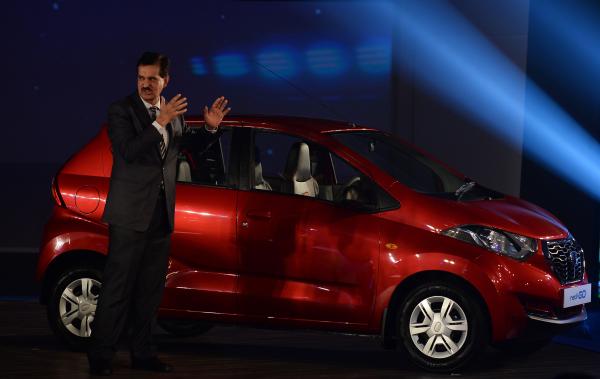NEW DELHI/BEIJING – Nissan has invested strongly in countries as Indonesia, deploying targeted models and beefing up distribution in Southeast Asia’s largest car market.
Three decades later, it revived low-cost brand Datsun in 2012. Though it only has 2.5 market shares in Indonesia, compared with smaller rival Mitsubishi’s 11 percent.
Nissan’s clear motivation for Nissan is pressing ahead with a plan to take a 34 percent stake in Mitsubishi Motors, even as the group tries to recover from damaging revelations over misleading fuel economy data.
Nissan Chief Executive Carlos Ghosn told analysts after the Mitsubishi deal was announced that in ASEAN, (Mitsubishi) makes more than 7 percent operating margins, where a negative gross profit margin means Nissan is losing money on each sale.
In Indonesia, a significant factor in Mitsubishi’s popularity is its network of suppliers for parts and components, ensuring good availability by keeping parts simple, and sticking to basic models. “Our customers benefit from vast availability of spare parts, many of which are non-maker-certified, generic components,” Mitsubishi Motors Chief Executive Osamu Masuko stated last year.
The latter added, “Most consumers don’t mind that because you can buy those parts anywhere in Indonesia and keep your cars in operation without disruptions.”
Mitsubishi said last year it would build a department for new parts purchasing and a new assembly plant near Jakarta and looking forward to export vehicles from this factory to other markets in Southeast Asia and beyond, with productions to begin in 2017.
“They have, in our opinion, better suppliers than us. We can take some of the parts,” Ghosn said on Thursday.
Nissan’s previous attempt to woo buyers in emerging markets like Russia, South Africa, Indonesia and India by resurrecting the Datsun and a $3,000 model has had little success.
India, where annual car sales are growing at their fastest pace in five years, was the first country chosen for the launch. But in an effort to make the car low-cost, Nissan ended up using poor quality materials, say analysts, and the move back-fired. Datsun sales were slow to pick up – few knew the brand and dealerships are sparse in small towns where demand for low-cost cars is highest.
Last year, Nissan’s sales in the country, set to become the world’s third-largest car market by 2020, fell 17 percent.
Overall, Nissan has a lead over Mitsubishi in India, but the cars it sells are limited to the low-cost and mid-income segments. The most expensive car Nissan sells in India is the Terrano SUV, priced starting at 1 million rupees ($15,000).
By contrast, the minimum price of Mitsubishi’s Pajero SUV in India is 2.65 million rupees. In India, Nissan would benefit from tapping Mitsubishi’s premium customers, whereas Mitsubishi can take advantage of Nissan’s economies of scale with suppliers
